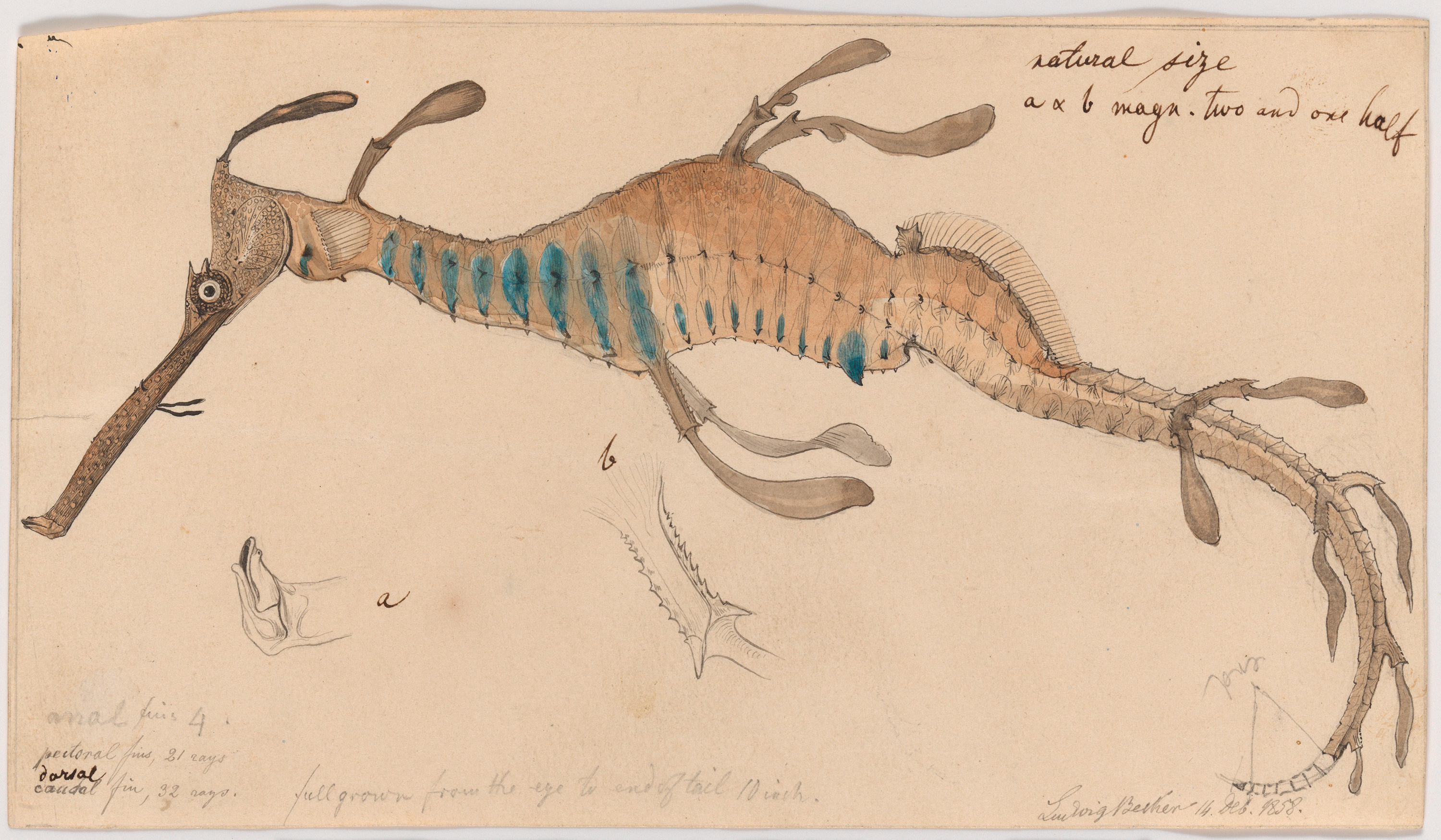Common Seadragon, Phyllopteryx taeniolatus
Plate 65, Figure 1. The Leafy Sea-Dragon, Phyllopteryx foliatus (now known as the Common or Weedy Seadragon, Phyllopteryx taeniolatus) found in Portland/Hobsons Bay/Western Port
This most singular-looking fish must have struck the Aborigines with some superstitious feeling, as I have seen a native drawing of a ghost, manifestly inspired by its strange form. The leafy appendages resemble bits of brown seaweed, and vary slightly, frequently showing a rich blue color. The above dull colors are those I have seen in one living specimen, and several just dead and quite fresh. The brilliantly colored fish represented in the Zoological Proceedings for 1865, plate 14, and in Mrs. Meredith's "Tasmanian Friends and Foes," plate 7, with yellow, crimson, and purple hues, is really a distinct species, for which I propose the name P. altus, because the greatest height or depth of the body exceeds the length of the snout from anterior edge of orbit, and equals about ten of the posterior body segments, or mid-row of spines in front of anal, while the greatest depth of the body in our common Victorian dull-colored species, as here figured, and as also in Shaw's original figure of the species, is scarcely ¾th the length of the snout, and only measures about 7 of the lateral spines of the hinder body segments in front of the anal.
Like the Pipe-fishes, the males of this fish carry the eggs in a soft membrane on the lower side of the tail, without, however, having a distinct pouch like the males of the true Pipe-fishes.
The Sea-dragons swim horizontally, like ordinary fish, and not in a vertical position, like Sea-horses.
Common at Western Port, not very uncommon in Hobson's Bay, and Geelong and Portland, from all of which localities specimens are in the National Museum.
